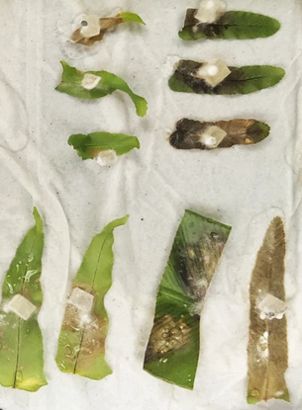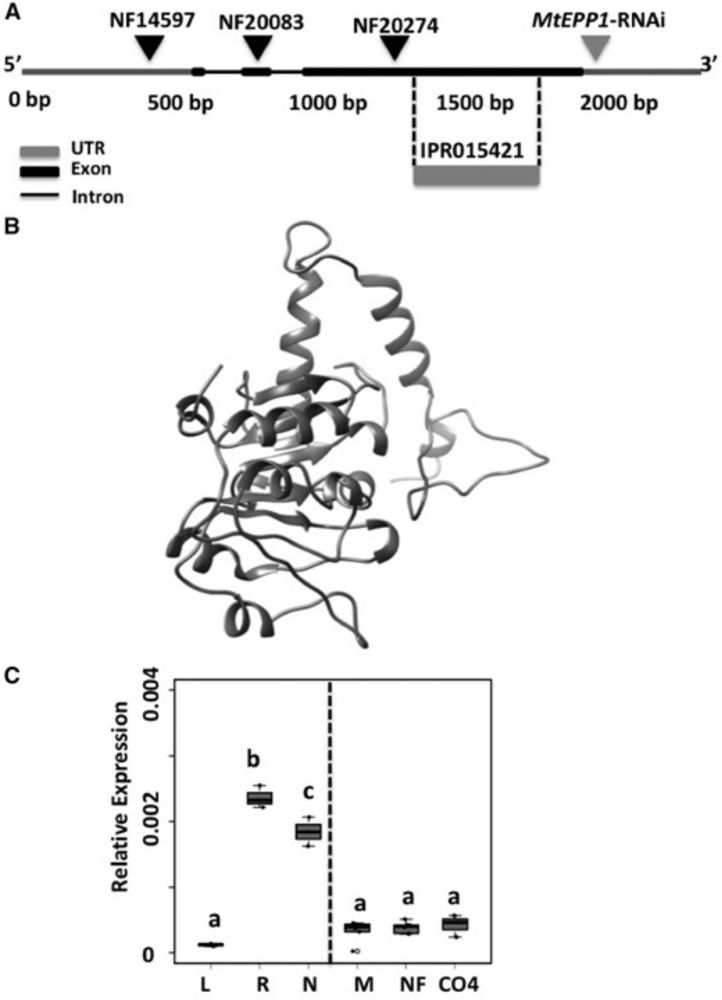
Eco-anxious

The continuation of a long standing project started by @oswaldovaldesl.bsky.social in @jeanmichelane.bsky.social‘s lab. 1/7 🧵
Depuis janvier, @quotaclimat.org, @dataforgoodfr.bsky.social et @sciencefeedback.bsky.social ont recensé 529 cas de désinformation climatique dans les médias audiovisuels. Plus d'infos 👉 vert.eco/articles/529...

Depuis janvier, @quotaclimat.org, @dataforgoodfr.bsky.social et @sciencefeedback.bsky.social ont recensé 529 cas de désinformation climatique dans les médias audiovisuels. Plus d'infos 👉 vert.eco/articles/529...
🌿🌿Our article on fern immunity has been peer-reviewed 🌿🌿
Thanks to @madeleinebaker.bsky.social @kellerjeanphd.bsky.social @maximebonhomme.bsky.social @pierremarcdelaux.bsky.social and @jacquet-chris.bsky.social
a quick thread 🧵 1/4

🌿🌿Our article on fern immunity has been peer-reviewed 🌿🌿
Thanks to @madeleinebaker.bsky.social @kellerjeanphd.bsky.social @maximebonhomme.bsky.social @pierremarcdelaux.bsky.social and @jacquet-chris.bsky.social
a quick thread 🧵 1/4
While most plants can produce pink, blue, and purple pigments (thanks to anthocyanins), the Cucurbitaceae family 🍈 🍉 🥒have lost all the pathway genes to produce these pigments.
🔗 doi.org/10.1101/2025...

While most plants can produce pink, blue, and purple pigments (thanks to anthocyanins), the Cucurbitaceae family 🍈 🍉 🥒have lost all the pathway genes to produce these pigments.
🔗 doi.org/10.1101/2025...
Congratulations @baptistebio.bsky.social @jacquet-chris.bsky.social et al.!
doi.org/10.1186/s129...
Congrats on this huge team effort to @baptistebio.bsky.social @madeleinebaker.bsky.social @kellerjeanphd.bsky.social @maximebonhomme.bsky.social @pierremarcdelaux.bsky.social

Congratulations @baptistebio.bsky.social @jacquet-chris.bsky.social et al.!
doi.org/10.1186/s129...
Congrats on this huge team effort to @baptistebio.bsky.social @madeleinebaker.bsky.social @kellerjeanphd.bsky.social @maximebonhomme.bsky.social @pierremarcdelaux.bsky.social

doi.org/10.1186/s129...
Congrats on this huge team effort to @baptistebio.bsky.social @madeleinebaker.bsky.social @kellerjeanphd.bsky.social @maximebonhomme.bsky.social @pierremarcdelaux.bsky.social
static1.squarespace.com/static/686d9...
static1.squarespace.com/static/686d9...
The continuation of a long standing project started by @oswaldovaldesl.bsky.social in @jeanmichelane.bsky.social‘s lab. 1/7 🧵

Congrats @melaniekrich.bsky.social @tatiana-vernie.bsky.social et al. for the hard work!
EPP1 is the fourth member of the Common Symbiosis Pathway 🍄🌱!
The continuation of a long standing project started by @oswaldovaldesl.bsky.social in @jeanmichelane.bsky.social‘s lab. 1/7 🧵

Congrats @melaniekrich.bsky.social @tatiana-vernie.bsky.social et al. for the hard work!
EPP1 is the fourth member of the Common Symbiosis Pathway 🍄🌱!
5️⃣ Mycorrhizal fungi are often first responders post wildfires, droughts, and human disturbances, helping plants regenerate, rebuild root systems & reestablish nutrient pathways.
See the top 10 list (buff.ly/nMNaB60) and follow for new fungal facts.
5️⃣ Mycorrhizal fungi are often first responders post wildfires, droughts, and human disturbances, helping plants regenerate, rebuild root systems & reestablish nutrient pathways.
See the top 10 list (buff.ly/nMNaB60) and follow for new fungal facts.

and
www.biorxiv.org/content/10.1...
Two papers to tell us more about mysterious EPP1, a protein required for symbiosis. Well done @tatiana-vernie.bsky.social and all co-authors.

and
www.biorxiv.org/content/10.1...
Two papers to tell us more about mysterious EPP1, a protein required for symbiosis. Well done @tatiana-vernie.bsky.social and all co-authors.
The continuation of a long standing project started by @oswaldovaldesl.bsky.social in @jeanmichelane.bsky.social‘s lab. 1/7 🧵

The continuation of a long standing project started by @oswaldovaldesl.bsky.social in @jeanmichelane.bsky.social‘s lab. 1/7 🧵
Congratulations to everyone involved in this work!
Congratulations to everyone involved in this work!
In this study we provide a mechanistic insight into how the protein EPP1 (first identified in Rose et al., 2012) functions in partnership with SYMRK.
www.biorxiv.org/content/10.1...

In this study we provide a mechanistic insight into how the protein EPP1 (first identified in Rose et al., 2012) functions in partnership with SYMRK.
www.biorxiv.org/content/10.1...


Great story in collaboration with @pierremarcdelaux.bsky.social and @jeanmichelane.bsky.social groups. EPP1 story continues after many years of collaborations with Pierre-Marc and Jean-Michel!!!

Great story in collaboration with @pierremarcdelaux.bsky.social and @jeanmichelane.bsky.social groups. EPP1 story continues after many years of collaborations with Pierre-Marc and Jean-Michel!!!

@justineprados.bsky.social vous donne 5 manières de continuer à se mobiliser 👉 vert.eco/articles/pet...
@justineprados.bsky.social vous donne 5 manières de continuer à se mobiliser 👉 vert.eco/articles/pet...



